Ditapis dengan
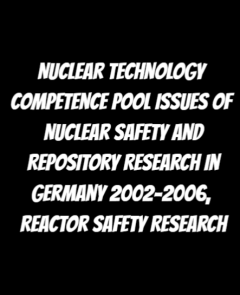
Nuclear Technology Competence Pool Issues of Nuclear Safety and Repository Re…
-
- Edisi
- -
- ISBN/ISSN
- -
- Deskripsi Fisik
- 88 p. : illus. ; 21 cm
- Judul Seri
- -
- No. Panggil
- 621.4835 FED N

Procedures for Conducting Probabilistic Safety Assessments of Nuclear Power P…
This safety practice report provides guidance on conducting a Level 1 PSA for internal events in nuclear power plants. The main emphasis is on the procedural steps of the PSA rather than the details of the corresponding methods. The report is intended to assist technical persons managing or performing PSAs. A particular aim is to promote a standardized framework, terminology and form of documen…
- Edisi
- -
- ISBN/ISSN
- 9201023928 / 00741892
- Deskripsi Fisik
- 175 p. : Illus. ; 24 cm
- Judul Seri
- Safety Series No. 50-P-4
- No. Panggil
- 621.48 IAE p
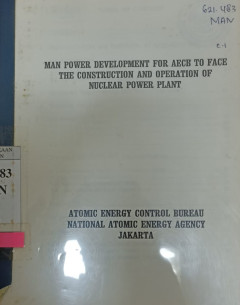
Man Power Development for AECB to Face the Construction and Operation of NPP
This book consist of Introduction; Responsibilities and Functions of Regulatory Body; Personnel Requirements and Qualifications; Training Programme; Training Schedules and Implementation; and Conclusion. (Jml)
- Edisi
- -
- ISBN/ISSN
- -
- Deskripsi Fisik
- 33 p. : Illus. ; 21 cm
- Judul Seri
- -
- No. Panggil
- 621.483 BAP m
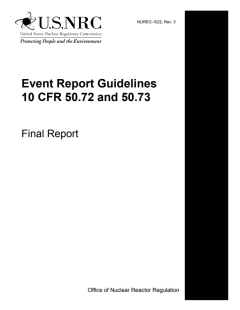
Event reporting guidelines 10 CFR 50.72 and 50.73. Revision 3 | Final Report …
NUREG-1022, “Event Reporting Guidelines: 10 CFR 50.72 and 50.73,” contains guidelines that the staff of the U.S. Nuclear Regulatory Commission (NRC) considers acceptable for use in meeting the requirements of Title 10 of the Code of Federal Regulations (10 CFR) 50.72 and 50.73. Several identified reporting issues could not be quickly resolved given certain ambiguities in NUREG-1022, Revisio…
- Edisi
- 3
- ISBN/ISSN
- -
- Deskripsi Fisik
- 107p
- Judul Seri
- NUREG-1022 Rev. 3
- No. Panggil
- 621.483 USN E
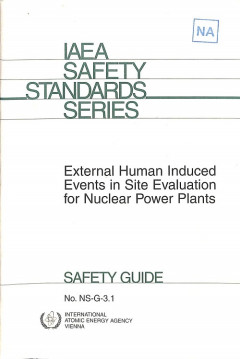
External Human Induced Events in Site Evaluation for Nuclear Power Plants | I…
This Safety Guide recommends actions, conditions and procedures in relation to external human induced events and provides guidance for fulfilling the requirements of Safety Standards Series No. NS-R-3, Site Evaluation for Nuclear Installations, when conducting a site evaluation for a nuclear power plant.
- Edisi
- -
- ISBN/ISSN
- 9201112025 / 1020525X
- Deskripsi Fisik
- 49 p. : Illus. ; 24 cm
- Judul Seri
- Safety Standards Series No. NS-G-3.1
- No. Panggil
- 621.483
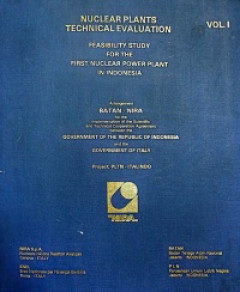
Nuclear Plants Technical Evaluation Vol.1 | Feasibility Study For the First P…
This document is about the technical study of Nuclear Power Plant Vol.1, namely the feasibility study of the first power plant in Indonesia between the Indonesian government represented by BATAN and PLN and the Italian government represented by Nira and ENEL. This study is an important document and becomes a part of Indonesian history related to PLTN in 1980. Volume one is divided into 4 sections.
- Edisi
- 1
- ISBN/ISSN
- -
- Deskripsi Fisik
- -
- Judul Seri
- -
- No. Panggil
- 355.0217 BAT N
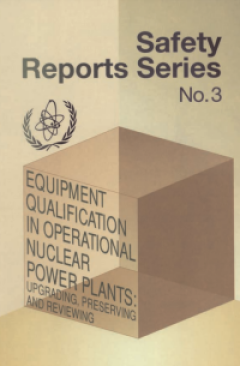
Equipment Qualification in Operational Nuclear Power Plants: Upgrading, Prese…
This report is based on information presented at two IAEA Technical Committee meetings held within the framework of the IAEA Project on Operational Safety Guidance in 1993 and 1994. The document was prepared to provide guidance to Member States in assessing the status of equipment qualification (EQ) in operational nuclear power plants and in preserving this status. It offers methods and practic…
- Edisi
- 3
- ISBN/ISSN
- 92-0-101098-2
- Deskripsi Fisik
- 126 p; 393KB
- Judul Seri
- -
- No. Panggil
- 621.483 IAE E
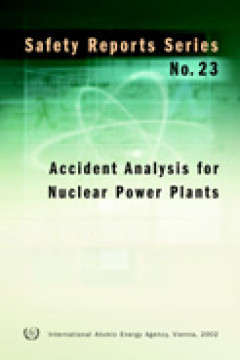
Accident Analysis for Nuclear Power Plants | Safety Reports Series No. 23
Accident analysis, i.e. deterministic safety analysis, is an important tool for confirming the adequacy and efficiency of provisions within the defence in depth concept for the safety of nuclear power plants (NPPs). An analysis that lacks consistency or quality, or is incomplete, represents a safety issue for a given NPP. The purpose of the report is therefore to provide the necessary practical…
- Edisi
- 23
- ISBN/ISSN
- 92-0-115602-2
- Deskripsi Fisik
- 129 p: 1.01 MB
- Judul Seri
- -
- No. Panggil
- 621.483 IAE A
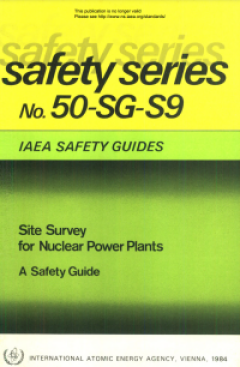
Site Survey for Nuclear Power Plants | Safety Series No. 50-SG-S9 IAEA Safety…
This Guide describes the first stage of the siting process for nuclear power plants — the site survey, which involves the study and investigation of a large region to select one or more preferred candidate sites. Its purpose is to recommend procedures and provide information for use in implementing a part of the Code of Practice on Safety in Nuclear Power Plant Siting (IAEA Safety Series No. …
- Edisi
- No. 50-SG-S9
- ISBN/ISSN
- -
- Deskripsi Fisik
- 64p
- Judul Seri
- -
- No. Panggil
- 621.483 IAE S
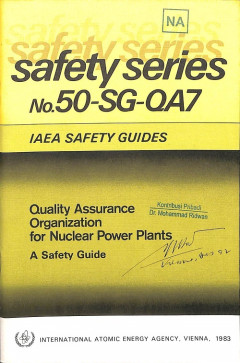
Quality Assurance Organization for Nuclear Power Plants, A Safety Guide | Saf…
This book consist : Introduction; Basic principles for structuring, staffing and documenting the organization for quality assurance; Organizational structure of the responsible organization; Organization of the plant disgners; Organization of manufacturers and constructors; and Record. (Jml)
- Edisi
- -
- ISBN/ISSN
- 9201231830
- Deskripsi Fisik
- 52 p. : Illus. ; 24 cm
- Judul Seri
- Safety Series No. 50-SG-QA7
- No. Panggil
- 621.483 IAE S
 Karya Umum
Karya Umum  Filsafat
Filsafat  Agama
Agama  Ilmu-ilmu Sosial
Ilmu-ilmu Sosial  Bahasa
Bahasa  Ilmu-ilmu Murni
Ilmu-ilmu Murni  Ilmu-ilmu Terapan
Ilmu-ilmu Terapan  Kesenian, Hiburan, dan Olahraga
Kesenian, Hiburan, dan Olahraga  Kesusastraan
Kesusastraan  Geografi dan Sejarah
Geografi dan Sejarah